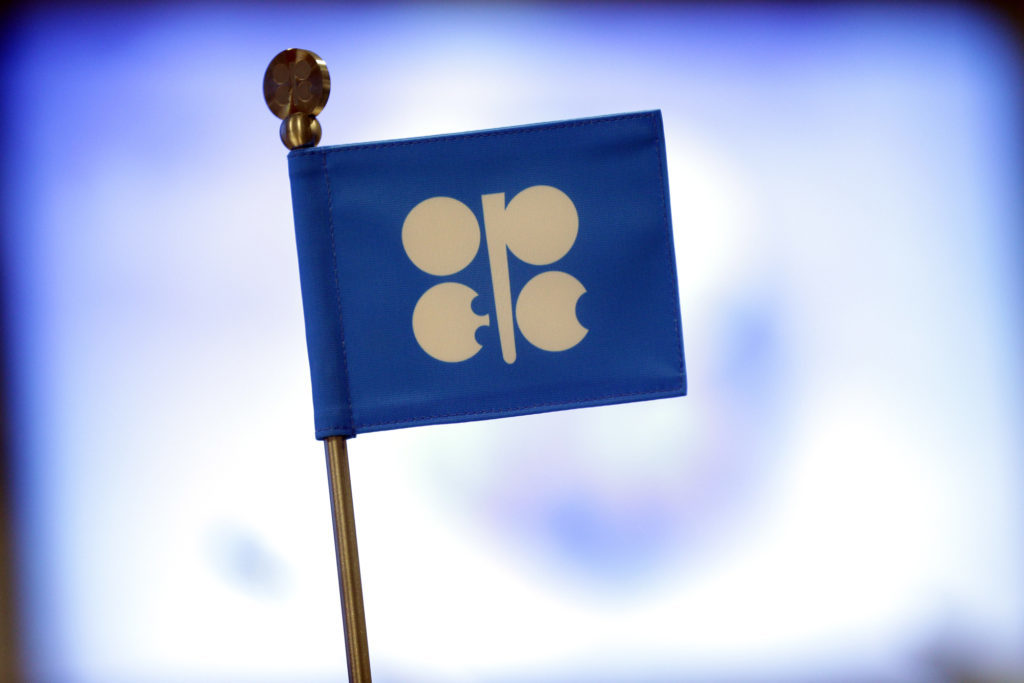
OPEC ministers took a gamble, agreeing on a large production cut to offset the demand hit from the coronavirus epidemic without having overcome Russian opposition to the move.
Ministers from the Organisation of Petroleum Exporting Countries agreed at talks in Vienna on Thursday that crude output should be reduced by 1.5 million barrels a day in the second quarter, but if Moscow doesn’t back the move there’s no deal, Iranian Oil Minister Bijan Namdar Zanganeh told reporters. Russian Energy Minister Alexander Novak wasn’t present at the conference, having left the city on Wednesday still opposed to idea.
A third of the cut would come from Russia and other non-OPEC allies, Zanganeh said. Those countries will come to the Austrian capital on Friday to discuss the agreement. Oil rallied initially, then erased gains to trade little changed at $51.20 a barrel as of 12:22 p.m. in London.
With oil prices down more than 20% since the beginning of the year, the debate between OPEC and its allies is being closely watched across the energy industry. The fortunes of resource-dependent economies from Africa to Asia, as well as corporate giants like Exxon Mobil Corp. and shale drillers in Texas, could turn on the cartel’s decision.
With flights canceled in Europe, schools closed in Japan, towns quarantined in Italy and a rising death toll from Iran to Washington state, the coronavirus crisis has gone global, and with it, its impact on energy demand. Goldman Sachs Group Inc. on Tuesday became the first major Wall Street Bank to forecast a contraction in demand this year.
Saudi Arabia’s push for a big cut reflects that mounting concern. Oil just suffered its biggest weekly slump since the global financial crisis, falling far too low to balance the budgets of most OPEC members.
“We think OPEC+ really needs to cut about 1 million to 1.5 million barrels a day just to put a floor under prices right now,” Allyson Cutright, a director at Rapidan Energy Advisers, said in a Bloomberg Television interview. Ultimately, the Russians will go along with that, but the Saudis “will have to take the majority” of cuts.
The division of cuts between Saudi Arabia and Russia has always been uneven, with the former bearing a larger share from the very start despite the latter having higher production. But the split has become more inequitable with each iteration of the deal. Last year, the kingdom implemented 65% of the group’s total supply reduction on average, compared with just 11% for Russia, according to data compiled by Bloomberg.
The Kremlin has gained a lot from its cooperation with OPEC. The country has been the biggest financial beneficiary of the cuts, largely because it’s borne a lesser share than Saudi Arabia. The alliance has also significantly enhanced President Vladimir Putin’s presence on the world stage and his political clout in the Middle East.
Still, pressure on the alliance is greater than ever and its two dominant nations aren’t necessarily aligned, with Russia only requiring a price of about $40 a barrel to balance its budget.
The coalition is already making deep cuts to offset the U.S. shale boom, agreeing on a fresh supply reduction of 2.1 million barrels a day as recently as December. OPEC’s output last month was the lowest since 2009, when the group implemented the sharpest production cuts in its history at the depths of the global financial crisis.
Removing another 1 million barrels a day would take the cartel’s output to the lowest since 2003, adjusting for membership changes over the period.
As well as seeking to forge a deal, members of OPEC+ are also grappling with the risks of bringing together delegations from 23 nations as the disease continues to spread. Medical advisers screened staff and delegates to check for high temperatures and some employees were told to work from home. OPEC told national delegations to limit their size to the “bare minimum” and blocked the press from entering its secretariat.
Recommended for you
